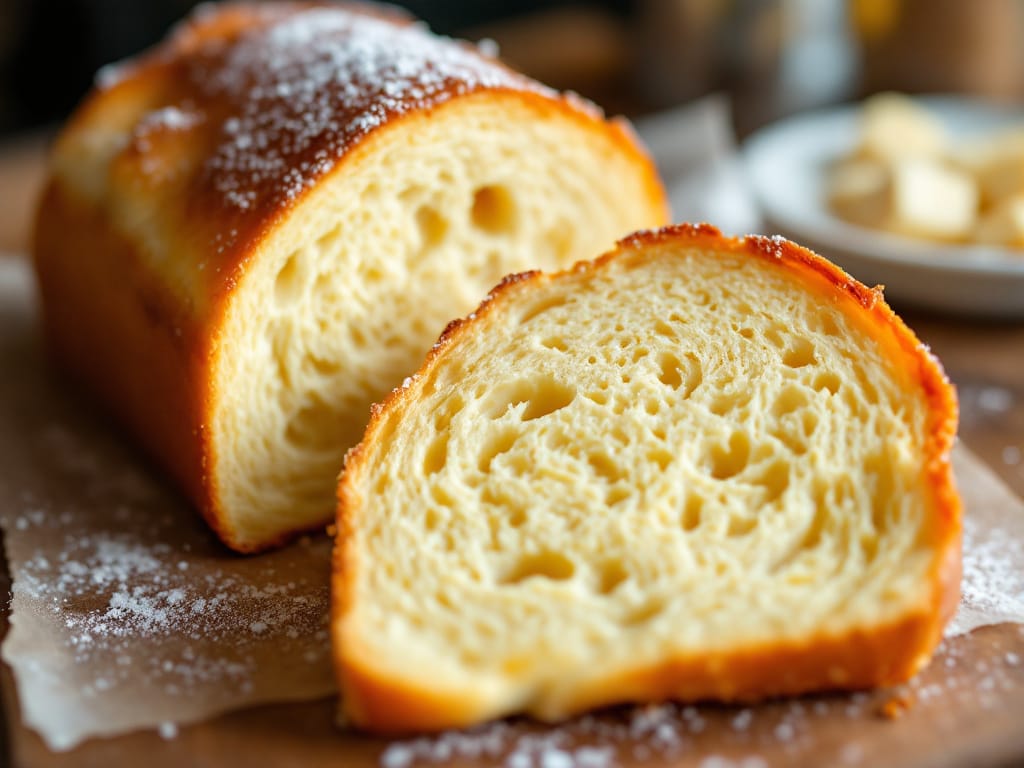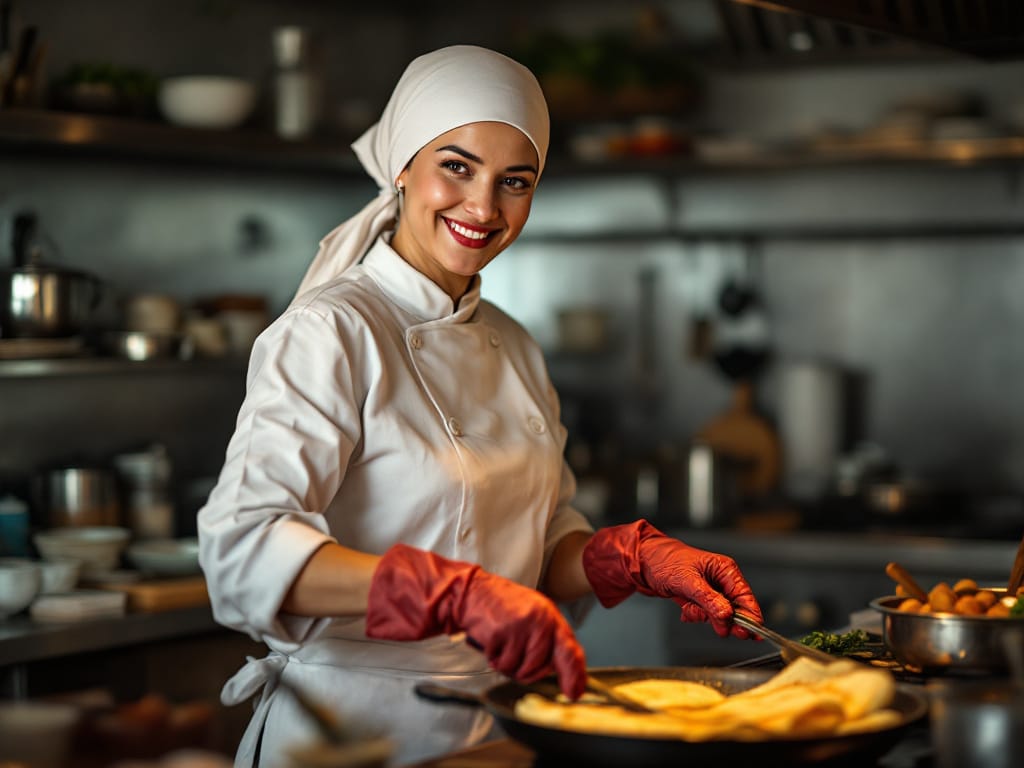French toast is a breakfast staple, known for its balance of crispy exteriors and soft, custardy centers. Achieving this texture begins with choosing the right bread, and brioche bread is one of the best options. Its tender crumb and buttery richness make it ideal for soaking up custard without falling apart. However, Knowing how to dry out brioche bread for French toast is essential to avoid soggy results and elevate this dish to restaurant-quality.
Drying brioche helps it absorb the custard more evenly, ensuring every bite is perfectly flavored. Throughout this guide, you’ll learn four proven methods to dry brioche bread: overnight air-drying, oven-drying, using a fan, and combining techniques. Each method has its advantages depending on your timeline and resources. With proper preparation, your French toast will go from good to gourmet!
If you’re looking for a finished recipe to complement this method, check out the Brioche French Toast recipe for a step-by-step guide.
Understanding the Science Behind Dry Bread
Moisture control is the secret to great French toast. Fresh brioche is too soft and contains excess moisture, causing it to become soggy when soaked in custard. Drying the bread reduces water content, allowing the custard to penetrate without oversaturating.
When bread dries, it undergoes staling, where water molecules evaporate or redistribute, creating a firmer texture. This stiffer surface holds its shape while soaking up liquids, creating a uniform consistency that cooks evenly. Conversely, overly moist bread leads to uneven cooking and a dense texture that lacks the airy quality French toast is famous for.
By drying your bread in advance, you ensure it absorbs just enough custard, leading to a perfect balance of creamy interiors and crispy edges. This step is especially crucial with brioche, as its naturally soft and rich texture requires extra care to dry properly.
Methods for Drying Brioche Bread
Overnight Air-Drying
One of the simplest ways to prepare your bread is through air-drying. To master how to dry out brioche bread for French toast:
- Step 1: Slice the brioche evenly, about ¾ to 1 inch thick. This thickness ensures the bread absorbs enough custard without falling apart.
- Step 2: Arrange the slices on a wire rack. A rack promotes air circulation, allowing all sides to dry evenly.
- Step 3: Leave the bread uncovered overnight in a cool, dry area. Avoid stacking slices, as this traps moisture.
Best Conditions for Air-Drying
- Room temperature between 60°F and 75°F.
- A low-humidity environment for faster drying.
- Gentle ventilation, like an open window or ceiling fan.
This method is ideal if you plan ahead and have time to let nature take its course. The result is brioche that’s firm but not overly hard, perfect for soaking in custard the next morning.

Oven Drying
For quicker results, the oven offers an efficient alternative. Oven-drying is a great way to learn how to dry out brioche bread for French toast when you’re short on time:
- Step 1: Preheat your oven to 300°F (or 275°F for a gentler approach).
- Step 2: Lay the slices on a baking sheet lined with parchment paper or a wire rack. Avoid overlapping slices.
- Step 3: Bake for 8-10 minutes per side, flipping halfway through to ensure even drying.
Visual Cues to Watch For
- Bread should feel firm to the touch but not hard like croutons.
- Edges may turn lightly golden, which is fine, but avoid browning too much.
Safety Tips
- Use parchment paper to prevent sticking.
- Monitor the slices closely in the last few minutes to avoid burning.
Oven drying is perfect when you’re short on time, delivering consistent results in under 30 minutes.
Using a Fan to Speed Up Air-Drying
When you need a quick fix but want to avoid the oven, a fan can help:
- Step 1: Place the brioche slices on a tray or wire rack.
- Step 2: Set up a fan to blow air directly over the bread for one hour per side.
How It Works
The moving air accelerates evaporation, mimicking the natural staling process in a fraction of the time. This method works best in a low-humidity environment to avoid reintroducing moisture.
Combination Methods
For ultimate control over texture, combine air-drying and oven drying:
- Start with overnight air-drying to remove most of the moisture.
- Finish with 5 minutes in the oven at 275°F to firm up the slices.
This hybrid approach combines the best of both worlds, ensuring evenly dried bread with a slightly crisp exterior.
What to Avoid When Drying Brioche Bread
To achieve optimal results, steer clear of these common pitfalls:
- Microwaving: While it may seem convenient, microwaving traps steam, leaving the bread moist instead of dry.
- Overbaking in the Oven: Drying bread too long or at too high a temperature can make it rock-hard and unsuitable for French toast.
- Uneven Slicing: Irregular slices dry unevenly, leading to inconsistent results when cooking.
By using these methods and avoiding common mistakes, you’ll prepare perfectly dried brioche bread every time. Ready for the next step? Your French toast masterpiece awaits!
Brioche French Toast Recipe Basics
French toast starts with a few simple yet essential ingredients. Here’s what you’ll need for a classic recipe:
- Eggs: The base of the custard, providing richness and structure.
- Milk or Cream: Adds moisture and creaminess. Whole milk or heavy cream works best.
- Vanilla Extract: For a hint of sweetness and warmth.
- Sugar: Optional, but a touch enhances the flavor.
- Cinnamon or Nutmeg: Optional spices for an aromatic twist.
The secret to achieving the perfect texture lies in the slightly dry brioche bread. Drying ensures the bread absorbs just the right amount of custard, creating a balance between crispy edges and a soft, creamy center. Fresh bread can become overly saturated, leading to soggy results. Using properly dried bread allows for even cooking and a luxurious bite every time.
Expert Tips for Perfect Custard Soaking
Mastering the soaking process is key to great French toast:
- Optimal Soaking Time: Allow each slice of brioche to soak for 15–20 seconds per side in the custard. This ensures the bread absorbs enough liquid without becoming too soft.
- Temperature Matters: Use slightly chilled custard to prevent the bread from absorbing too quickly.
- Balancing Flavors and Texture: Add a pinch of salt to your custard to enhance sweetness and balance flavors. Ensure the custard is smooth and evenly mixed to coat the bread uniformly.
These steps guarantee that the bread retains its structure while delivering a burst of flavor in every bite.
Troubleshooting French Toast Issues
Even seasoned cooks encounter challenges when making French toast. Here’s how to fix common problems:
Bread Crumbling During Soaking
- Ensure the bread is sliced thickly (¾ to 1 inch). Thin slices are more likely to disintegrate.
- Avoid over-soaking; brioche only needs 15–20 seconds per side in the custard.
Soggy French Toast
- The bread may not have been dried enough. Properly dry or stale bread is crucial for achieving the right texture.
- Use moderate heat when cooking to allow the custard to set without burning the exterior.
Dry French Toast
- The custard might not be rich enough. Use whole milk or cream for better absorption.
- Increase soaking time slightly if the bread is too firm.
For creative uses of dried bread beyond French toast, read How to Use a Large Quantity of Sourdough Discard for more kitchen ideas.

FAQs Section
Can I Dry Brioche in the Microwave?
No, drying brioche in the microwave is not effective. Microwaves create steam, which can reintroduce moisture into the bread. This prevents the bread from achieving the firm texture needed for French toast.
How Long Can Dried Brioche Be Stored?
Dried brioche can be stored in an airtight container at room temperature for up to three days. For longer storage, freeze the slices in a resealable bag. Thaw them at room temperature before use.
Is Stale Bread the Same as Dried Bread?
No, stale bread naturally loses moisture over time, but it may still have uneven wet spots. Dried bread, on the other hand, is intentionally dehydrated for uniform texture, making it better suited for French toast.
Can I Use This Drying Method for Other Breads?
Absolutely! These drying methods work well for most bread types, including sourdough, challah, and baguettes. However, brioche’s soft texture and rich flavor make it a standout choice for French toast.
Why Dry Bread Is Essential for French Toast
Fresh bread is too moist, which prevents it from absorbing the custard properly. The result? Soggy and uneven French toast. Drying brioche reduces its moisture content, allowing it to soak up the custard evenly and retain its structure during cooking.
Brioche is particularly suited for French toast because of its buttery, rich flavor and soft crumb. Drying it enhances its ability to absorb liquid without losing its integrity. For more insights into why brioche is perfect for French toast, explore Is Brioche the Same as French Toast?.
Conclusion
Drying brioche bread is an essential step to achieving perfectly textured French toast. Whether you use air-drying, oven-drying, or a fan, the goal is to create bread that absorbs custard evenly without becoming soggy.
By pairing properly dried bread with a well-balanced custard and following expert soaking tips, you’ll create a breakfast dish that’s crispy, creamy, and bursting with flavor. With these techniques, you can elevate your French toast to culinary perfection. Give it a try and enjoy the delicious results!










